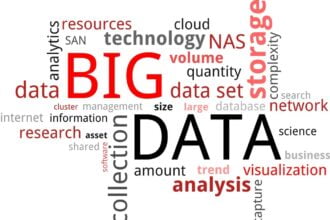For some sports fans, going to a game has become more of a hassle than an enjoyment. With high ticket costs, bad views, endless lines for concessions and bathrooms, and missing replays, many sports fans are instead choosing to watch the big game from the comforts of their own home, rather than trekking out to the stadium or arena. In fact, in 2011, an ESPN poll found that only 29% of sports fans would rather be at the game than watch it at home.
For some sports fans, going to a game has become more of a hassle than an enjoyment. With high ticket costs, bad views, endless lines for concessions and bathrooms, and missing replays, many sports fans are instead choosing to watch the big game from the comforts of their own home, rather than trekking out to the stadium or arena. In fact, in 2011, an ESPN poll found that only 29% of sports fans would rather be at the game than watch it at home.
However, in exchange for a better in-person experience, 45% of “premium fans” (who often or always buy season tickets) would head back to watch the game in person. But what exactly constitutes a better in-person experience?
Big data is helping to define and improve that in-person experience. Big data and wearable technology are combining to offer fans a better, more informed in-person game experience. First, wearable technology has grown tremendously over recent years. Athletes, coaches, and trainers have embraced wearable technology as a way to monitor and improve athlete performance, from gauging metrics like heart rate or timing reactions to monitoring the body for signs of concussion or fatigue.
However, now this wearable technology can be used for the fans’ benefit as well. For example, NBA arenas now use SportVU, a program that installs GPS technology-enabled cameras in arenas to track the movements of the ball and players. While the primary purpose of this technology is to decide when to rest players, the Cleveland Cavaliers have also repurposed this program to funnel data to their Humungotron, showing fans unique statistics during the game in real-time. Even better? The Cavs also use the statistics in their social media marketing and in partnerships with various advertisers.
But of course, knowing the accurate statistics at any given time in a game is only scratching the surface of how big data can improve the stadium experience and make it as comfortable as the at-home experience. Across the nations, stadiums are upgrading their facilities to be high-tech, through partnerships with Google, IBM, and other technology companies.
For example, the Sacramento Kings partnered with Google in 2014 to equip their courtside personnel (mascots, reports, and dancers) with Google Glass. Fans could then stream close-up views of the courtside action through their mobile devices, despite being in an upper-level seat.
Another standout stadium is Levi’s Stadium, home of the San Francisco 49ers. Levi’s Stadium has a fiber optic network with 680 Wi-Fi access ports, 12,000 Ethernet ports, a 40 gigabit-per-second network, and 1,700 wireless beacons that use a version of Bluetooth to find a fan’s position within the stadium and give them directions. And for fans that are line-averse, an app developed especially for the stadium can be used to deliver food to your seat while you watch on-field action replays on your phone.
The Barclays Center uses Vixi to allow Brooklyn Nets fans to display their tweets (with the proper hashtag) on multiple big screens throughout the arena. The arena also uses AmpThink to gather data about their game attendees before giving them access to the arena’s Wi-Fi, so that management can learn more about how and where people are logging in, plus what services they’re using at the arena. While they can already order food and drink from their seats and replay court action from a variety of camera angles, fans will soon be able to use an app to find information about restroom line times and get directions to the bathroom with the shortest lines.
Network television and technology have made it easy for the fan to stay home and watch games on multiple screens instead of rousing themselves to go to the stadium. However, with the help of big data, arenas and stadiums are improving the game day experience by making it more comfortable, more personal, and closer to the action than ever. To learn more about how big data is chaning the sports fan’s experience, check out this informative infographic from the Northwestern School of Professional Studies.







